From just before World War two until the mid-1990s, a small group of engineers, Harry Ferguson Research Limited, pioneered the 4×4 technology that is still used in many cars today. This small team had a profound effect on both road and competition cars.
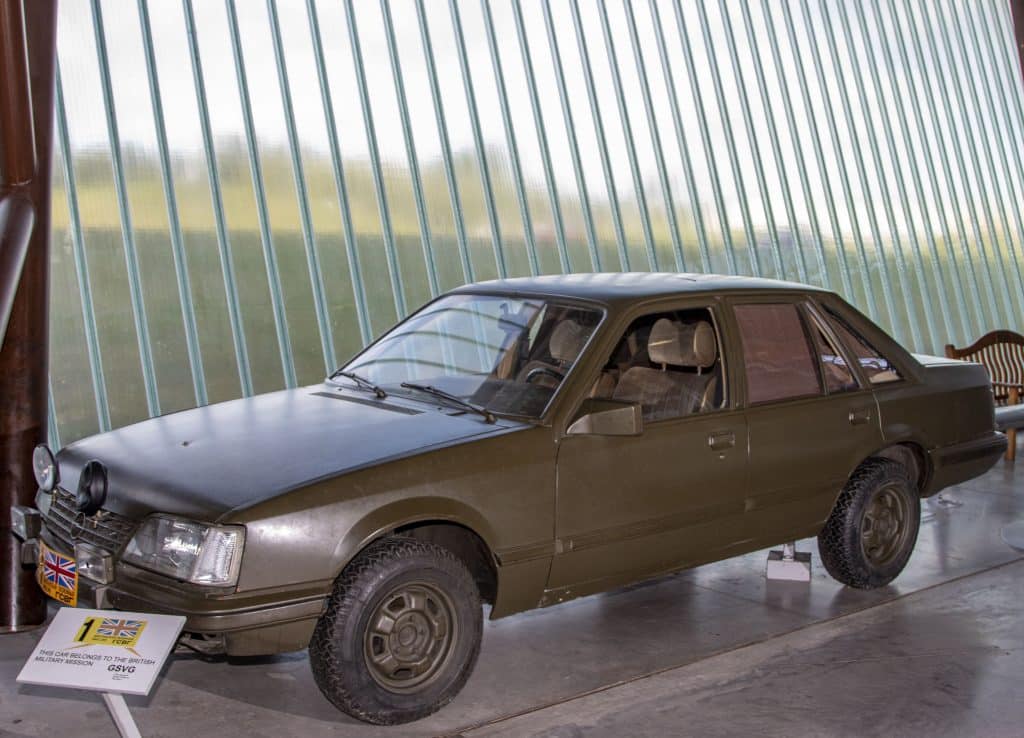
A BRIXMIS Senator can be seen in the RAF Cold War Museum at Cosford near Telford.
Though the technology carried Harry Ferguson’s name, the idea of fitting full-time four-wheel drive into a normal car as a safety feature came from racing driver Fred Dixon. He and his friend, Tony Rolt (who won the 1953 Le Mans driving a Jaguar C-type and, whilst a prisoner of war in Castle Colditz during WW2, had been part of the famous glider escape plan) formed Dixon-Rolt Developments Ltd just before the war to bring it about. After the war, they employed former Aston Martin engineer Claude Hill (the man behind the famous Atom prototype) to work on their ideas. Tractor manufacturer Harry Ferguson originally got to know Dixon through the latter’s participation in the Ulster TT race in the 1930s, which took place close to where Ferguson was born. Ferguson was impressed with what Dixon and Rolt were doing and invested in the company, renaming it Harry Ferguson Research Ltd. Shortly afterwards, in a stroke of genius, he publicly defined the technology that made it work, saying that cars needed “a diff’ that diffed when it should diff’, and didn’t when it shouldn’t”. In other words, a diff’ that locked and unlocked automatically, or on demand. At first, HFR designed prototype cars that Ferguson himself wanted the motor industry to license and build. These were rejected, as much because of Ferguson’s difficult character as because the four-wheel drive aspect was something for which manufacturers simply didn’t see a market or need for. Even victory for Stirling Moss in the 1961 Gold Cup at a damp Oulton Park, driving the company’s Fergeson-Climax P99 four-wheel drive F1 car, failed to bring about a change. Fittingly, that win turned out to be the last time a front-engined car won an F1 race.
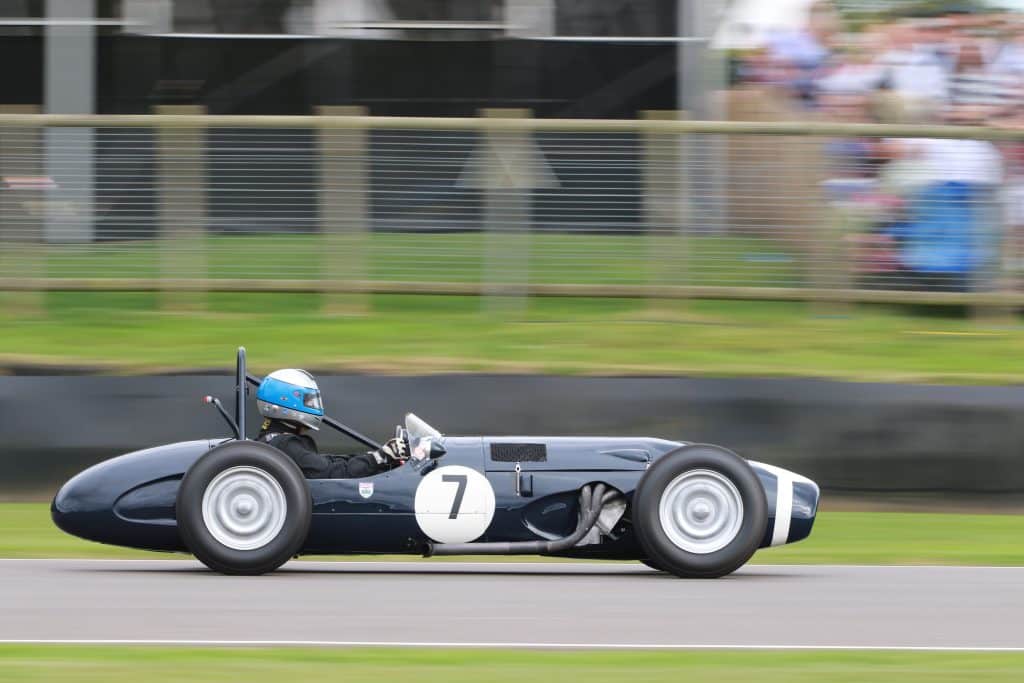
Ferguson P99 F1 car racing at the Goodwood Revival meeting.
Sadly, Ferguson never got to see that win as he’d passed away in 1960, but the company continued; at that point over £2m had been spent on development but HFR’s technology, though much admired, had not quite made the commercial breakthrough they needed. The team changed their strategy and developed a system that companies could incorporate into their existing or forthcoming models. On the whole, the mass production industry still rejected it, despite GKN coming on board as licensees to make the components at a commercially viable price, because it was seen as too expensive for the benefit it offered. It was left to Jensen to pioneer the idea of a production car. Having initially built a prototype four-wheel drive CV8 FF, the company launched the Jensen FF in 1966. Effectively a 4×4 version of their beautiful Chrysler V8 powered Interceptor, which had been styled by Federico Formenti at Touring of Milan, the FF was easily recognized by its dual side grilles and was the first production car in the world to incorporate the Ferguson Formula; full-time four-wheel drive and Dunlop Maxaret anti-skid braking. Its transfer case used Ferguson’s patent mechanical Duolok locking system. The FF was very expensive – £1500 more than its 2WD Interceptor sibling at £5340 – and just 320 were built in its five-year production run despite it winning plaudits from magazine road testers and having several celebrity owners, including golfer Tony Jacklin and drummer Ginger Baker, extolling its virtues. Tellingly, Porsche bought an early FF for evaluation although it turned out to be 22 years before a four-wheel-drive 911 arrived. This wave of positive reaction led to HFR producing many prototypes for manufacturers, and several small batches of cars including four-wheel drive Triumph Stags, Mustangs, Capris and a Fiat 130 saloon. They also produced 22 4×4 MkIV Zephyrs with ABS braking for the UK police to evaluate and more for various other customers. In the late sixties the motor racing world, including Matra/Tyrrell, BRM, Cooper, Brabham and Lotus also experimented with four-wheel drive racing cars for both F1 and Indianapolis, often using FF technology, but it never showed a clear advantage on a dry track because it added weight, complexity and driveline inertia.
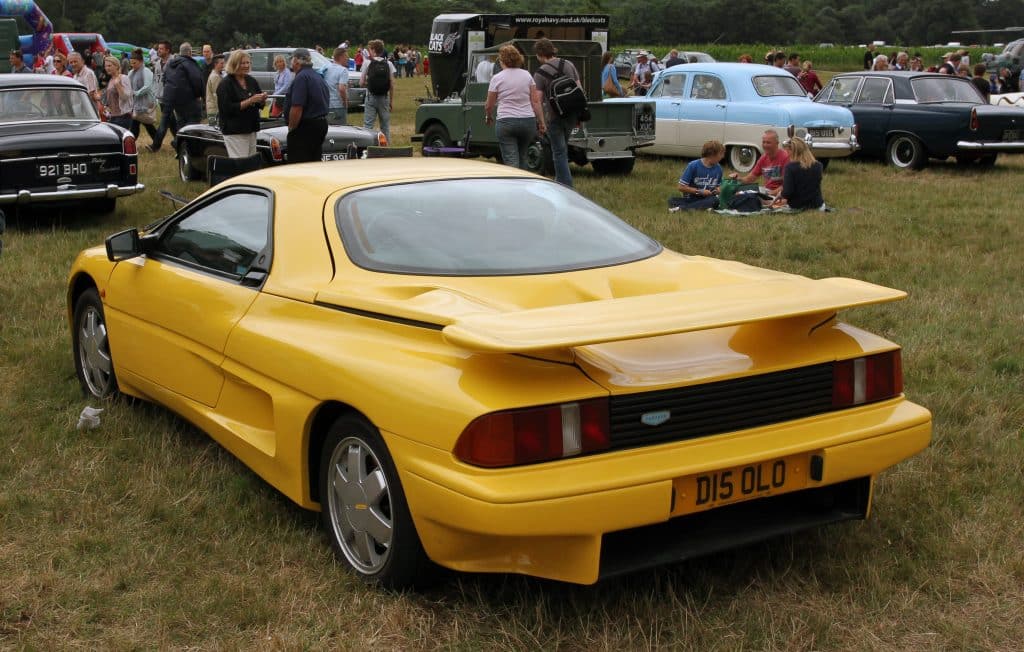
The Panther Solo 2 is a rarity but features a Viscous Coupling 4×4 system.
FFD’s invention of the game-changing Viscous Control (VC), which used a viscoelastic liquid silicone (the main ingredient of the child’s toy, ‘Potty Putty’, also known as ‘Silly Putty’), came too late to change HFR’s fortunes, however.
The company ceased work on four-wheel drive ideas in 1971. Tony Rolt then formed FF Developments (FFD) and in 1980 was joined by his son Stuart. Together they built a successful but initially relatively small-scale business converting various cars to four-wheel drive, sometimes as one-off builds for wealthy individuals, and often for car companies considering adopting the system.
FFD also built small batches of cars for organizations such as the police or the military, usually for a specific purpose, and one of the most successful was a four-wheel drive version of Opel’s well-regarded 1980s Senator and the related Monza coupe. Having previously converted a small fleet of Opel Admirals for the British Commanders’-in-Chief Mission to the Soviet Forces in Germany (BRIXMIS), FF was tasked to develop the Senator for use in rough terrain.
Their bodyshells were specially strengthened by Opel Rallye Sport and fitted with heavy-duty suspension, which also raised the ride height although most of the time they were weighted down with sandbags so they appeared to be normal staff cars.
The BRIXMIS soldiers drove them from Germany to FFD for the conversion work to be carried out and loved driving them back; one return run was apparently conducted at an average speed of 110mph! Their off-road abilities enabled them to get close to Russian-held areas and, among other things, they were used for one particularly gruesome task, collecting Russian sewage as they often ‘recycled’ their orders and memos by using them as toilet paper. The BRIXMIS teams collected and washed these so they could be read…
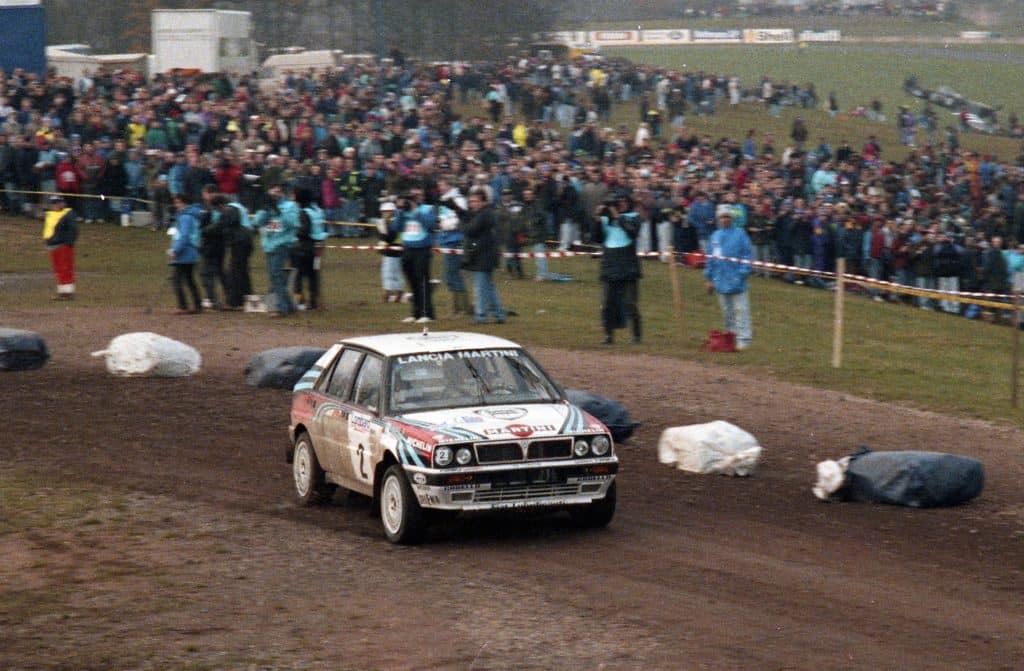
Juha Kankkunen and Juha Piironen emerged victorious at the 1991 RAC rally in their Lancia Delta Integrale.
The arrival of the Audi quattro finally showed the world the advantages of four-wheel drive and the motor industry then beat a path to FF’s door. Volkswagen, Volvo, Nissan, Lancia, Jeep, Land Rover, and many others, including, eventually, Audi, adopted FFD technology for their 4WD models. This led to a huge boom in four-wheel drive use and FFD, as the widely respected experts in the field, were able to expand.
The list of cars that used FFD technology is enormous but includes the Sierra Cosworth 4×4 and its sibling Escort Cosworth, plus the RS200 Group B car, the Nissan Pulsar GTI-R, Lancia Delta Integrale, Mazda 323GTX, Land Rover Freelander, Panther Solo2, Peugeot 205 T16, MG Metro 6R4, and the original XJ220 V12 prototype. FF Developments gradually moved into general driveline and transmission work and was taken over by Ricardo in 1994.
It continues as the highly successful transmission division of that company, having produced transmissions for such vehicles as Audi’s Le Mans prototypes, the McLaren F1 and the Bugatti Veyron.
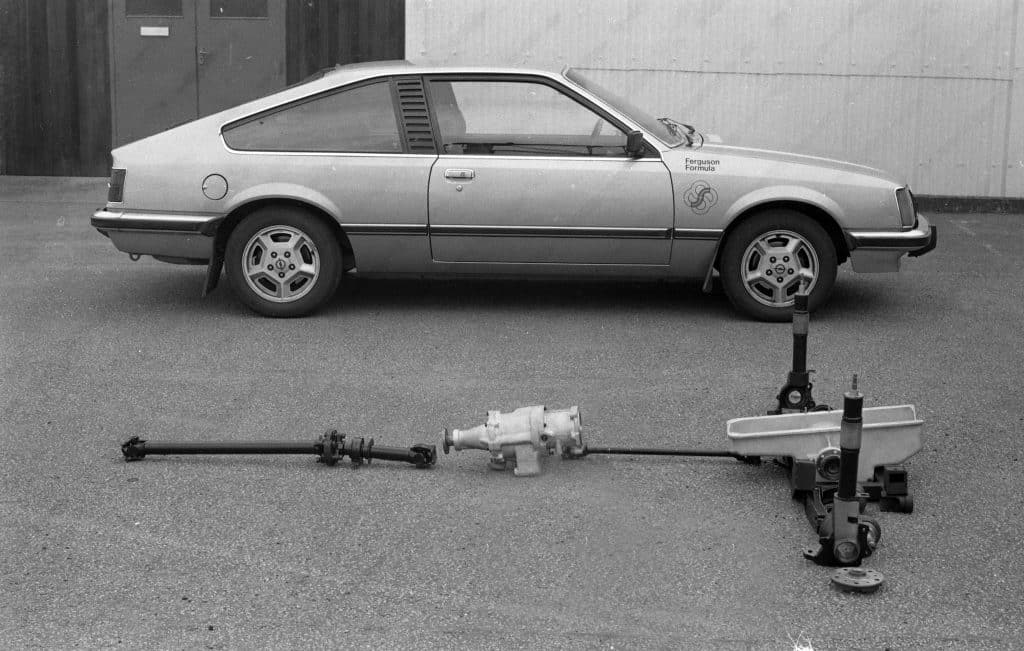
FF’s Opel Monza demonstrator with the parts needed to convert it to four-wheel drive. The Motor ran a back-to-back test of the car against an Audi quattro and pronounced the Monza to be superior in many ways. (Stuart Rolt)
The book, ‘Traction for Sale: The Story of Ferguson Formula Four-wheel Drive’ by Bill Munro is well worth seeking out for a more detailed history of FF and the work they did to transform the motor industry.
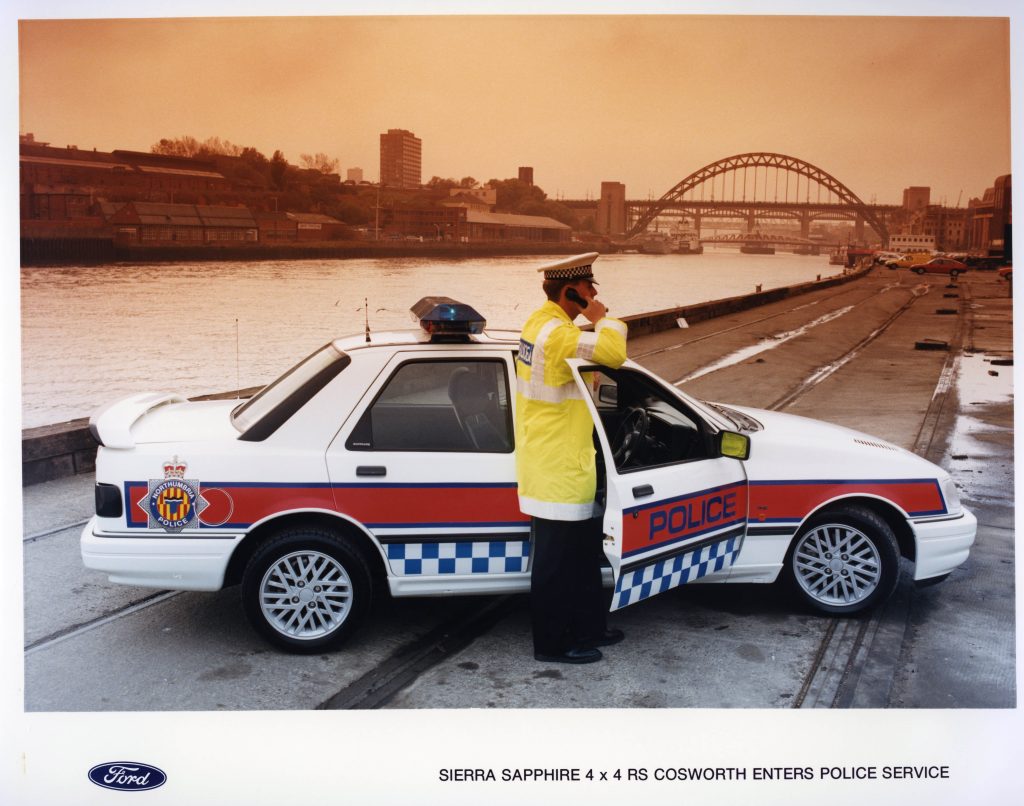
The police loved the Sierra Sapphire Cosworth, fast enough to catch the bad guys, big enough to lock them in when caught. Many traffic officers rate it as their favourite police car of all time. (Ford)

